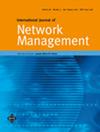Intent-Based Network Configuration Using Large Language Models
Abstract
The increasing scale and complexity of network infrastructure present a huge challenge for network operators and administrators in performing network configuration and management tasks. Intent-based networking has emerged as a solution to simplify the configuration and management of networks. However, one of the most difficult tasks of intent-based networking is correctly translating high-level natural language intents into low-level network configurations. In this paper, we propose a general and effective approach to perform the network intent translation task using large language models with fine-tuning, dynamic in-context learning, and continuous learning. Fine-tuning allows a pretrained large language model to perform better on a specific task. In-context learning enables large language models to learn from the examples provided along with the actual intent. Continuous learning allows the system to improve overtime with new user intents. To demonstrate the feasibility of our approach, we present and evaluate it with two use cases: network formal specification translation and network function virtualization configuration. Our evaluation shows that with the proposed approach, we can achieve high intent translation accuracy as well as fast processing times using small large language models that can run on a single consumer-grade GPU.

 求助内容:
求助内容: 应助结果提醒方式:
应助结果提醒方式:


